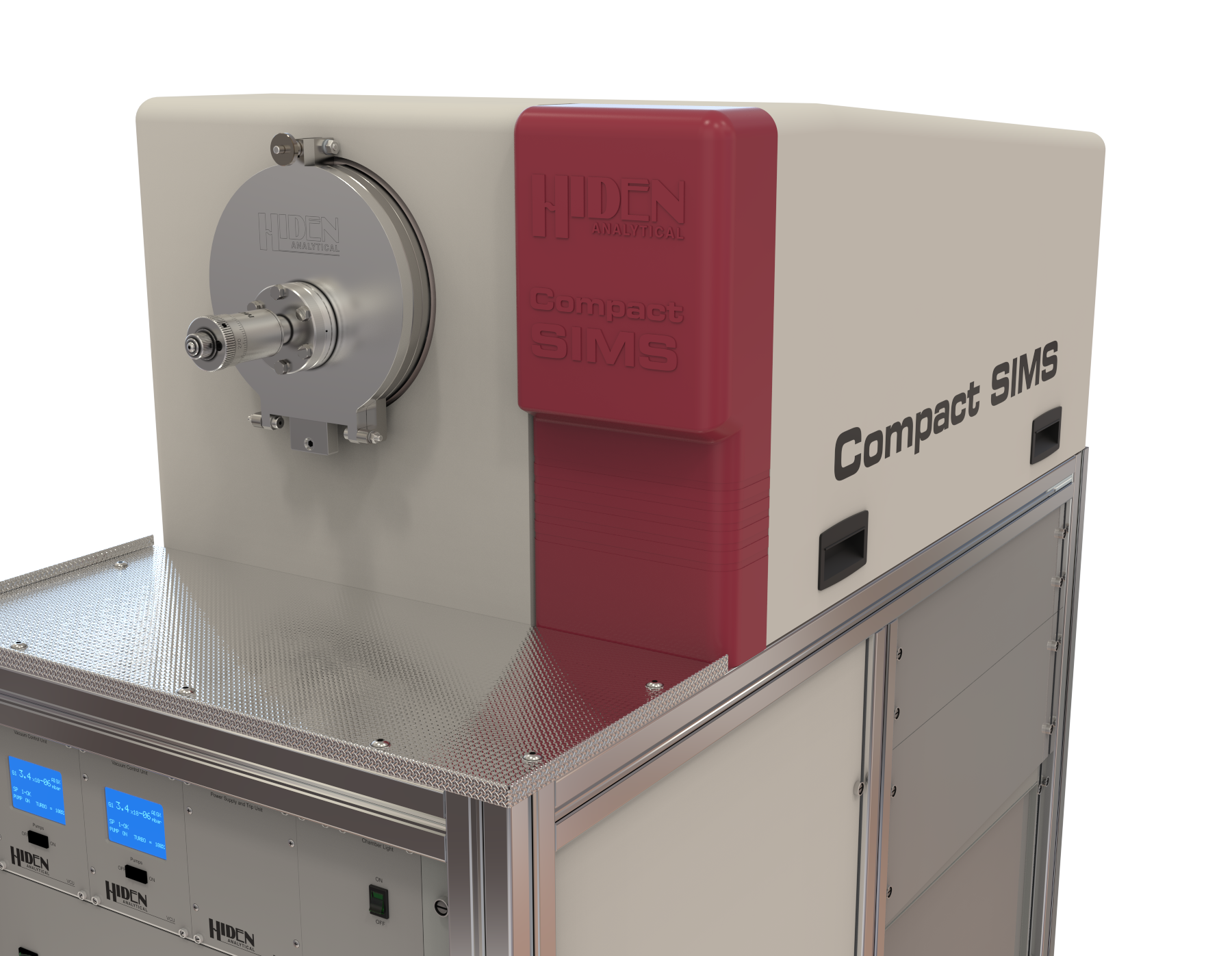Compact SIMS

For further information and pricing, please get in touch with us.
Compact SIMS – a design breakthrough for surface analysis
The Hiden Compact SIMS tool is designed for fast and easy characterisation of layer structures, surface contamination and impurities with sensitive detection of positive ions being assisted by the oxygen primary ion beam and provides isotopic sensitivity across the entire periodic table. The ion gun geometry set to provide is ideal for nanometre depth resolution and near surface analysis.
Applications
A rotary carousel enables 10 samples to be simultaneously loaded for measurement into the dry-pumped vacuum chamber. The instrument has a small footprint and is exceptionally easy to use, it boasts the same control software and ion gun system as the fully featured Hiden SIMS Workstation family, providing depth profiles, 3D and 2D images and mass spectral data. The MAXIM-600P detector is based around the highly reliable Hiden 6mm triple quadrupole mass filter with pulse ion detection. An electron gun option is available for analysis of insulating samples.
In addition to SIMS, the Compact SIMS has an SNMS facility that is useful for quantification of high concentration elements, such as alloys.
Suib Group, University of Connecticut | SIMS
The Effectiveness of Hiden’s Compact SIMS Analysis System for Various Research Applications
The SIMS Mapper software provides a simple, but powerful, user interface to the SIMS tool. The species to be analysed are chosen from a period table view, with mass interferences highlighted, and the data are collected as images throughout the analysis. For depth profiles the gated area can be defined after analysis and images may be stacked to reconstruct the concentration profile in three dimensions. For less experienced operators, or in a production environment, analyses can be run from previously stored templates and fully automated “queued” running is possible with the automatic stage option. A range of data export formats allows results to be used by other software packages for enhanced display or processing.
- 3D imaging
- depth profiling with highly flexible gating
- simple choice of species
- easy set-up for inexperienced users yet full control for experts
- large live interactive image and depth profile windows
- export in .csv and proprietary formats

